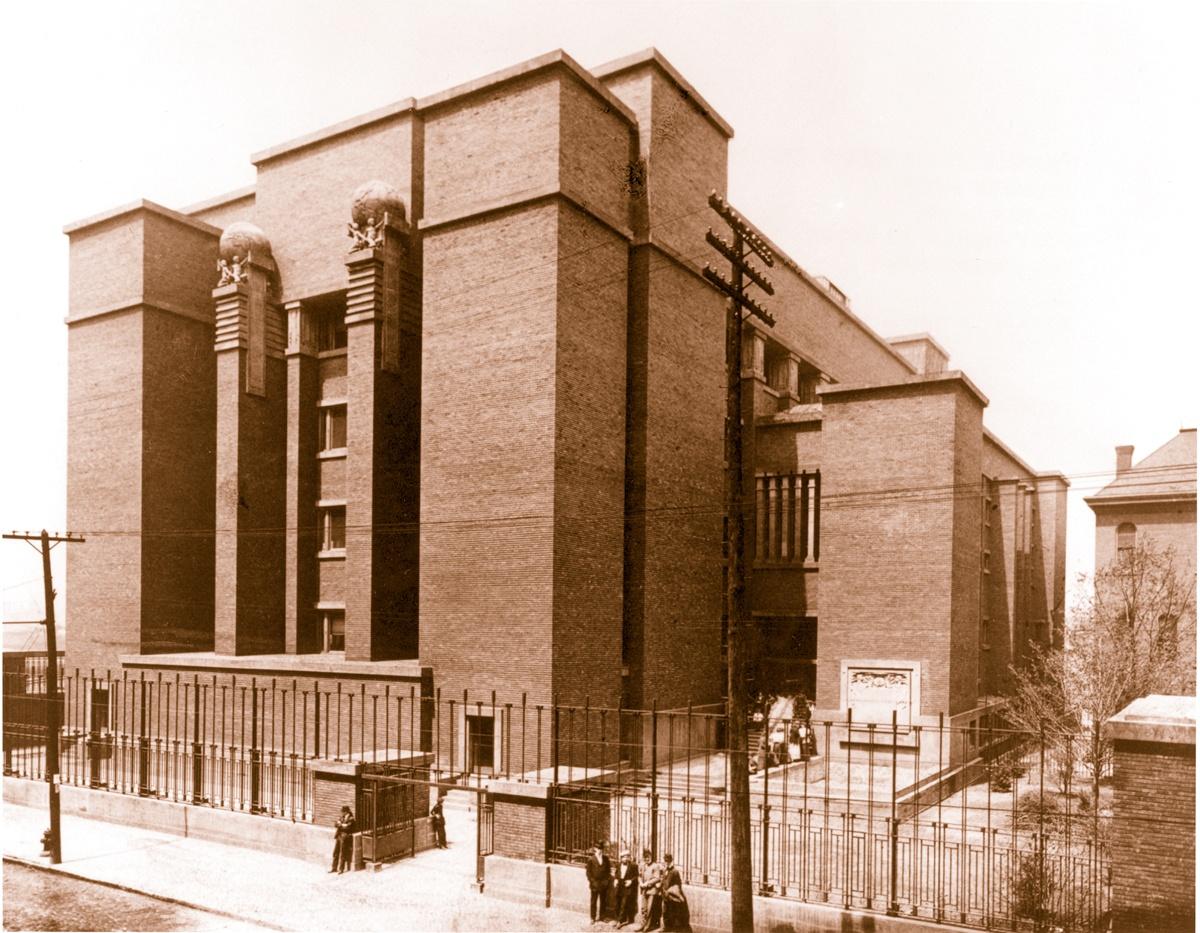Frank Lloyd Wright's Buffalo
Buffalo's Lost Treasure
One of Buffalo's architectural treasures, the Larkin Soap Company Administration Building, was lost to the wrecker's ball more than a half century ago, "an act of destruction," one of Wright's biographers has written, "subsequently recognized as cultural vandalism." Wright, in his Autobiography called the Larkin Building "the first emphatic protestant in architecture against the tide of meaningless elaboration sweeping the United States." He said the brick and stone structure was "a genuine expression of power directly applied to purpose" that represented "affirmation of the new Order of this Machine Age."There is no question that the building was one of the finest Wright ever designed. Completed in 1904 at a cost of $4 million, it was constructed of dark red brick, utilizing pink tinted mortar, and it was notable for its block-like vertical structure and large central atrium rising the full height of the building. Side gallery offices were illuminated by the central court and windows between the brick piers. The upper level contained a kitchen, bakery, dining rooms, classrooms, a branch of the Buffalo Public Library and a conservatory.
A roof garden, paved with brick, served as a recreation area for employees, families and guests. The entrances of the building were flanked by two waterfall-like fountains. Above them were bas-reliefs by Richard Bock, a sculptor who worked on other Wright creations. He also designed the globes on the tops of the building's central exterior piers.
Natural and artificial light was provided by a Wright-designed innovation, hermetically sealed double-paned windows. There were Wright-designed electrical fixtures that enabled the employees to work in comfort at their Wright-designed metal office furniture while breathing air from a Wright-designed "air conditioning" system, another first for a major office building.
A Wright biographer wrote of the Larkin building, "It was a spectacular concept, handsomely executed, an extraordinary structure," that received international acclaim and was written about in contemporary architectural journals. Wright described his Larkin building as "noble," and added, in response to a critic, "It may lack playful light and shade, but it has strength and dignity and power. It may not be 'Architecture,' but it has integrity."
Retailing trends resulting in declining sales forced changes in the Larkin operation. In 1939, it was decided to move the Larkin Retail Store from across the street into the administration building where there was more floor space. An extensive renovation was completed that altered the Wright-inspired character of the building.
In 1943, the administration building was sold to a Pennsylvania contractor who had no plans for it. When the Larkin store lease ran out, the new owner abandoned the building and it was taken over by the city in a 1945 tax foreclosure. Despite a national advertising campaign to try to sell the building, no buyer could be found for the city's asking price.
Vandals had begun stripping anything of value. As Larkin historian Jerome Puma wrote, "By October 1947, the building was virtually useless. Every double-paned window was broken, the iron gate had fallen off its rusted hinges, and the iron fence surrounding the building was sacrificed for a wartime scrap collection."
Several proposals to buy the structure were rebuffed as being too far below value. Finally, a local buyer with the intention of tearing down the building took the property off the city's hands and demolition began in 1950. It took more than four months to take down the building, however, because the floors were built of reinforced concrete and supported by steel beams. It was said that Wright took perverse pleasure in the fact that he had built the Larkin Building so well that it was hard to tear down.
Thus, an important piece of Buffalo architectural history was lost in less than a half century, a victim of economic times and changing attitudes that favored "new" over what had been, not too long before, revolutionary in concept.

The Larkin Company Administration Building

Larkin Soap Adverstisement